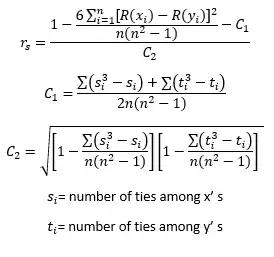I have some data where the response variable is a proportion, and I am experimenting with transformation using Tukey's family of folded powers, $f(p) = p^\lambda - (1 - p)^\lambda$, with values of $\lambda$ from 0 to 1.
Folded roots are nicely described by @Nick Cox here: https://stats.stackexchange.com/a/195305/212689
and @whuber here: https://stats.stackexchange.com/a/10979/212689.
Trying to get my head round this, I have a couple of questions:
- @whuber states that 'When $\lambda = 1/2$ we get the folded root, or "froot," $f(p) = \sqrt{1/2}\left(\sqrt{p} - \sqrt{1-p}\right)$.' Assuming that this is the same use of $\lambda$ as in the equation I give above, I'm struggling to see how to rearrange to get $\sqrt{1/2}$ at the beginning of the equation. Can anyone explain?
- How do I back-transform from $f(p)$ to get back to $p$? Again, I'm struggling with the maths (especially as $(1 - p)^\lambda$ is a never-ending binomial expansion)!
